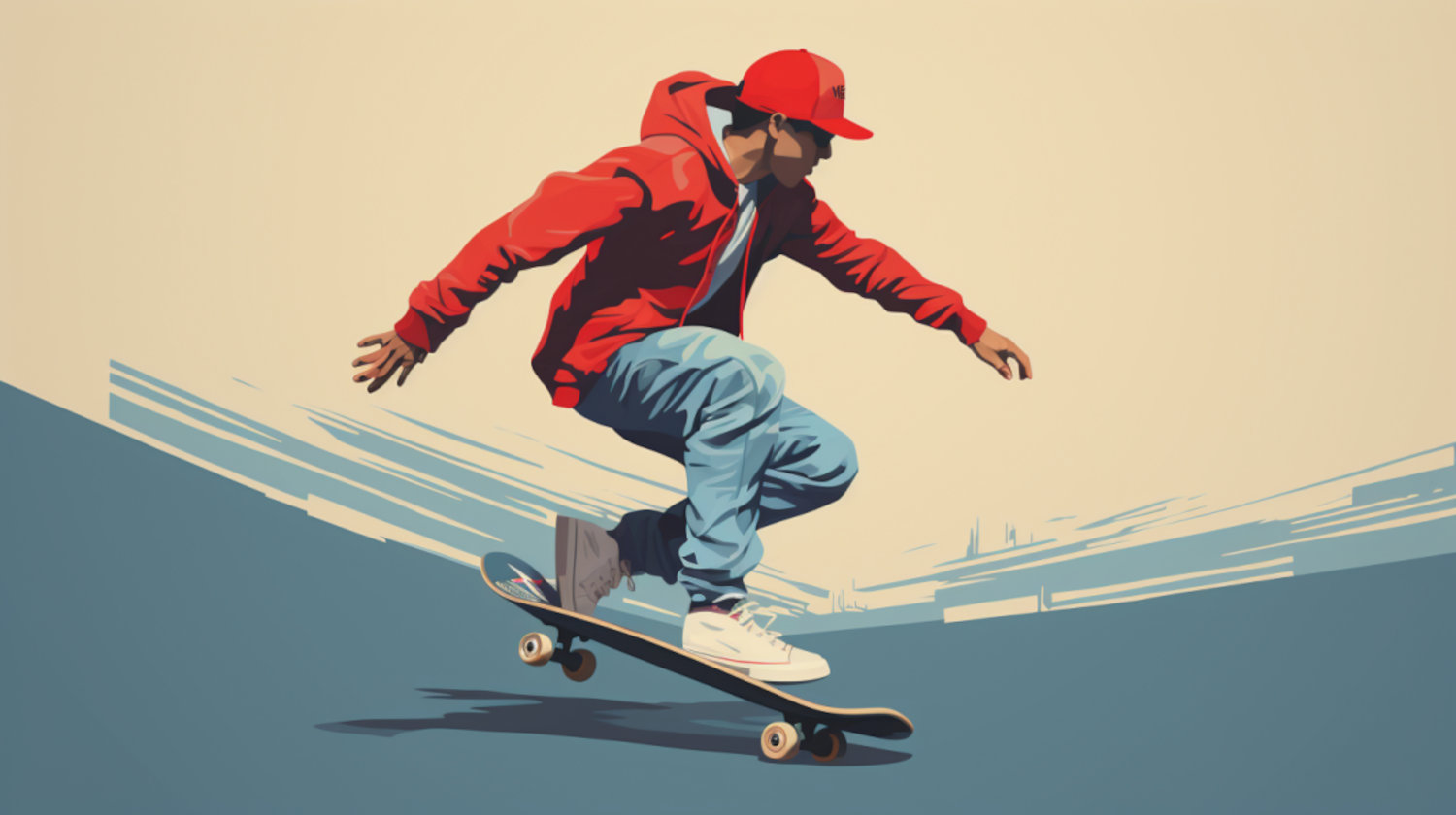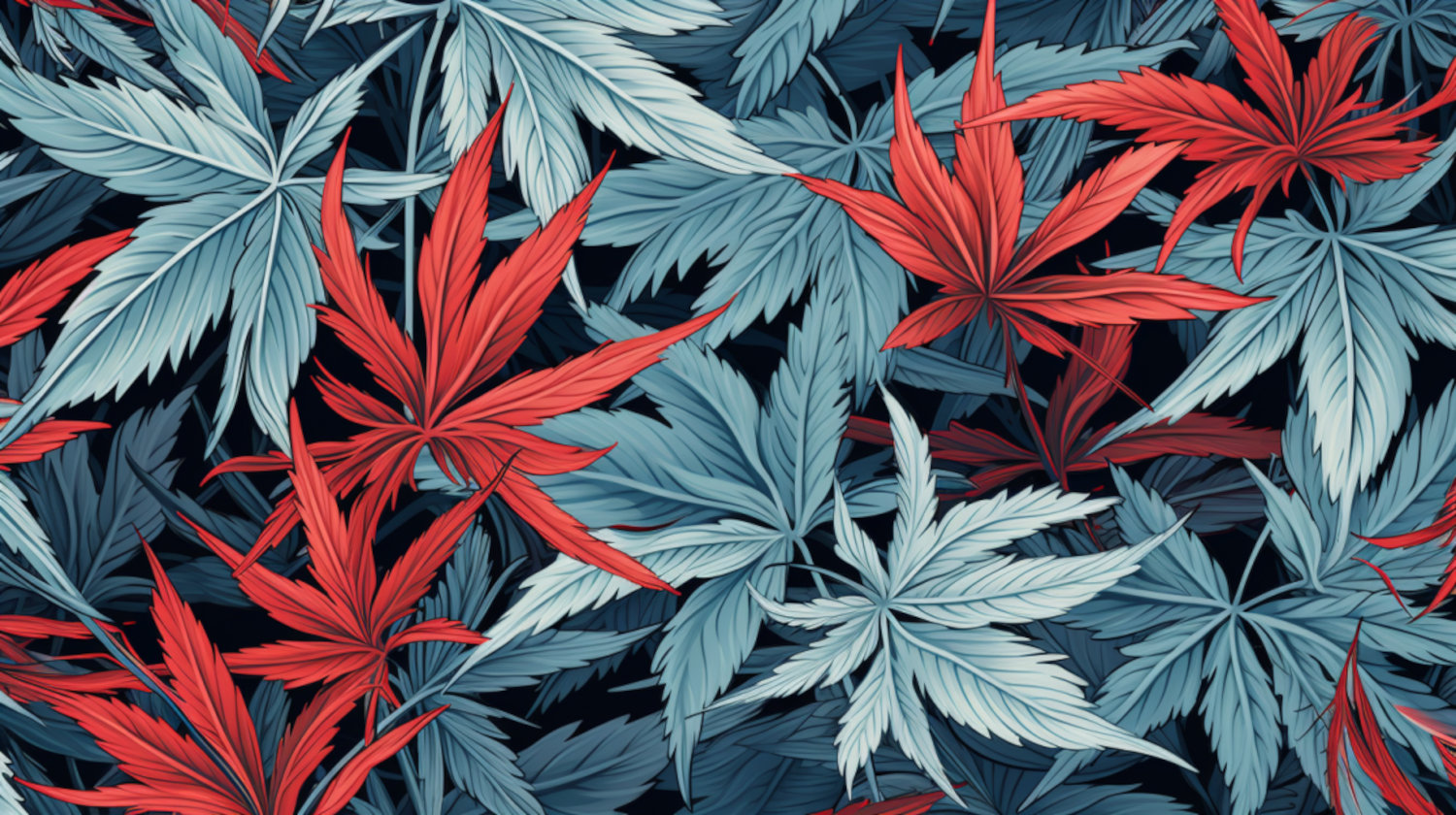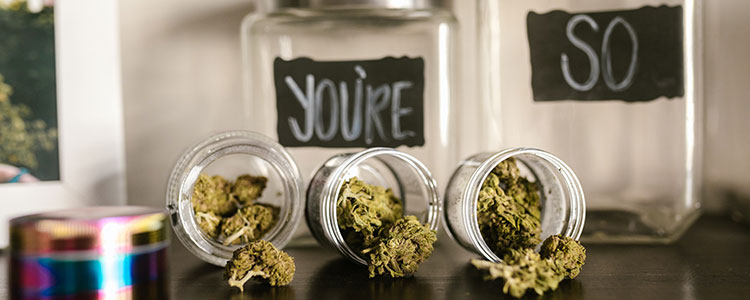Drugs fall into a variety of different classes, including stimulants, depressants, and hallucinogens. Understanding these different classes can help you make informed choices about substance use.
Stimulants bring you “up,” depressants bring you “down,” and hallucinogens help you “trip.” If you’re just starting to learn about these drug classes, then you may be wondering how cannabis fits into them. Many people use cannabis because of the sensations that it can induce, so let’s dive into more information about cannabis and its characteristics.
Stimulant vs Depressant: What’s the Difference?
It's a good idea to get a detailed picture of stimulants and depressants. Each of these drug classes has their own characteristics and defining features, so it’s important to understand the differences between them.
Stimulants: According to the Drug Enforcement Administration (DEA), “Stimulants speed up the body’s systems.” Drugs in this class include amphetamines, diet aids, cocaine, methcathinone, and more. Stimulants are commonly abused and used illicitly, which can lead to a severe dependence. Stimulants come in a variety of different forms and can be consumed in different ways.
Many people report stimulant effects as being exhilarating and enhancing. They can also change someone’s appetite and reduce someone’s need for sleep. People often take stimulants recreationally because of the “high” that they can provide.
Stimulants are used in a variety of ways, sometimes without a prescription. Stimulant abuse can often lead to addiction, with the first signs typically being cravings and fixations. Individuals who chronically use stimulants can become aggressive, hostile, and agitated. If you think that you or someone might be dealing with a stimulant addiction, there are many different resources available.
There is some overlap between stimulants and hallucinogens. For example, ecstasy (which is a hallucinogen) has some stimulant properties. Some stimulants are legal and require a prescription, while others are entirely illegal and dangerous to use. When it comes to using stimulants, it’s essential to do so under the guidance of a doctor.
Stimulants are used legally for a variety of different things, including diet aids and ADHD treatment. Most people who use these drugs illegally use them for the effects that they induce.
Depressants: Depressants are the opposite of stimulants. Depressants act on the central nervous system, slowing brain activity. They often induce sleep, make individuals feel more relaxed, and can relieve anxiety. Barbiturates and benzodiazepines are two common drug classes that are depressants.
Depressants are commonly found as pills, syrups, and liquids. Some depressants can be injected, and the method of consumption can impact the effects the individual experiences.
In many cases, depressants are obtained legally and then distributed illegally. It’s possible to become addicted to depressants, and this can lead to chronic issues. Depressants can cause feelings of euphoria and calmness. Individuals often take larger amounts than prescribed in order to have stronger effects.
Depressants are prescribed to induce sleep, relieve anxiety, and prevent seizures, among other things. It’s essential to only take depressants as prescribed, as this is the best way to make sure that you’re staying as safe as possible.
When comparing stimulants vs. depressants, the former will speed up the body’s systems, and the latter will slow them down.
Is Weed a Stimulant or Depressant?

So is weed a stimulant or depressant?
Interestingly, cannabis can act as both a stimulant and a depressant.1 Cannabis has been demonstrated in clinical research to have more depressant effects in children and more stimulant effects in adults, and adolescents had a roughly even split of CNS depression and stimulation.2 Whether cannabis acts as a stimulant or a depressant may also depend on the specific strain and terpenes that are consumed.3 For example, it’s likely that the level of myrcene may have a large impact on whether weed acts as a stimulant or depressant.4 It’s possible that the higher the level of myrcene, the more likely the individual may be to experience depressant effects.
Cannabis acts as a depressant in a few different ways. Common effects that cannabis can elicit that are similar to those of depressants include:
The effects of cannabis can vary depending on the individual person and their specific biology and endocannabinoid system. Characteristics such as age, sex, and hormones may all play a role in how cannabis interacts with your brain to produce effects. It’s important to understand how you react to cannabis, so you can make sure that you’re staying safe.
Some people may experience both stimulant and depressant effects in the same cannabis use session. For example, a consumer may feel stimulant effects right after use and more depressant effects as the cannabis wears off.
When is Weed a Stimulant?

There are some situations in which weed may have more stimulant effects. Whether or not cannabis acts as a stimulant is most likely dependent on the strain and terpenes it contains.5
Another terpene that could be responsible for stimulant effects is limonene. It’s possible that this terpene may reduce symptoms associated with anxiety and depression, so it’s a holistic and natural option many consumers have considered for the treatment of those issues.6
It is possible that some strains can make individuals feel more uplifted and energetic, and many individuals experience stimulant effects right after consuming cannabis.
If you’re looking for a cannabis product that may have more stimulating effects, consider finding an option with high levels of limonene and low levels of myrcene. Watching out for these terpenes is a great way to predict how you may react to a cannabis product. However, it is important to make sure that you’re using cannabis mindfully and only buying products from reputable sources.
When is Weed a Depressant?

Cannabis has the ability to slow down the central nervous system, which means that brain function is also slowed.7 This can contribute to depressant effects, impacting an individual’s thinking and ability to process various situations.
One of the classic depressant effects of cannabis is inducing sleep. Some cannabis products can – anecdotally – encourage sleep, while others can make you feel energized.
Cannabis is also known for muscle relaxation.8 Some people with disorders that impact their muscles will use cannabis for its relaxation benefits.
As individuals use cannabis more and more, it’s possible to develop a tolerance to these depressant effects. If you’re concerned about developing a tolerance, then it’s important to make sure that you’re taking breaks from use and thinking carefully about the dose you’re taking.9
Which type of weed strain is a downer?
If you’re looking for a weed option that will have depressant effects, then strains having high myrcene and linalool are most likely going to be the best option for you. These myrcene and linalool dominant strains are often associated with sleep and relaxation, so they may be a great option if you want to chill out.
References
- Murray JB. Marijuana’s effects on human cognitive functions, psychomotor functions, and personality. The Journal of general psychology. 1986;113(1):23-55. doi:https://doi.org/10.1080/00221309.1986.9710540
↩︎ - Noble MJ, Hedberg K, Hendrickson RG. Acute cannabis toxicity. Clinical Toxicology. 2019;57(8):735-742. doi:https://doi.org/10.1080/15563650.2018.1548708
↩︎ - Piomelli D, Russo EB. The Cannabis sativa Versus Cannabis indica Debate: An Interview with Ethan Russo, MD. Cannabis and Cannabinoid Research. 2016;1(1):44-46. doi:https://doi.org/10.1089/can.2015.29003.ebr
↩︎ - Surendran S, Qassadi F, Surendran G, Lilley D, Heinrich M. Myrcene—What Are the Potential Health Benefits of This Flavouring and Aroma Agent? Frontiers in Nutrition. 2021;8. doi:https://doi.org/10.3389/fnut.2021.699666
↩︎ - Cox-Georgian D, Ramadoss N, Dona C, Basu C. Therapeutic and Medicinal Uses of Terpenes. Medicinal Plants. Published online November 12, 2019:333-359. doi:https://doi.org/10.1007/978-3-030-31269-5_15
↩︎ - Song Y, Seo S, Lamichhane S, et al. Limonene has anti-anxiety activity via adenosine A2A receptor-mediated regulation of dopaminergic and GABAergic neuronal function in the striatum. Phytomedicine: International Journal of Phytotherapy and Phytopharmacology. 2021;83:153474. doi:https://doi.org/10.1016/j.phymed.2021.153474
↩︎ - Ortiz YT, McMahon LR, Wilkerson JL. Medicinal Cannabis and Central Nervous System Disorders. Frontiers in Pharmacology. 2022;13. doi:https://doi.org/10.3389/fphar.2022.881810
↩︎ - Zettl UK, Rommer P, Hipp P, Patejdl R. Evidence for the efficacy and effectiveness of THC-CBD oromucosal spray in symptom management of patients with spasticity due to multiple sclerosis. Therapeutic Advances in Neurological Disorders. 2015;9(1):9-30. doi:https://doi.org/10.1177/1756285615612659
↩︎ - Colizzi M, Bhattacharyya S. Cannabis use and the development of tolerance: a systematic review of human evidence. Neuroscience & Biobehavioral Reviews. 2018;93:1-25. doi:https://doi.org/10.1016/j.neubiorev.2018.07.014
↩︎
The information in this article and any included images or charts are for educational purposes only. This information is neither a substitute for, nor does it replace, professional legal advice or medical advice, diagnosis, or treatment. If you have any concerns or questions about laws, regulations, or your health, you should always consult with an attorney, physician or other licensed professional.




